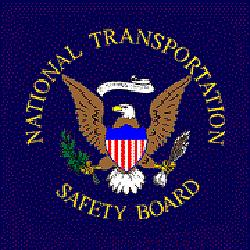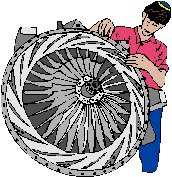FAA: He Improperly Installed Oil Filter, Leading To Crash
 An airframe and powerplant mechanic
in Fargo, ND, has surrendered his ticket after it was ordered
revoked by the FAA. This, in the wake of a mishap involving a
Cessna 177RG -- a plane he'd worked on just before the crash.
An airframe and powerplant mechanic
in Fargo, ND, has surrendered his ticket after it was ordered
revoked by the FAA. This, in the wake of a mishap involving a
Cessna 177RG -- a plane he'd worked on just before the crash.
The Cardinal went down shortly after take-off on February 26th,
less than 30-seconds after the aircraft lost engine power.
According to the preliminary NTSB report:
On February 26, 2005, at 1403 central standard time, a Cessna
177RG, N1623H, piloted by a commercial pilot, was substantially
damaged during a forced landing following a loss of engine power
during initial climb from runway 18 (9,000 feet by 150 feet,
grooved concrete) at Hector International Airport (FAR), Fargo,
North Dakota.
Visual meteorological conditions prevailed at the time of the
accident. The airplane delivery flight was operating under the
provisions of 14 CFR Part 91 without a flight plan. The pilot and
passenger sustained serious injuries. The flight was destined for
Festus Memorial Airport (FES), Festus, Missouri.
The airplane was recently sold and a pre-buy inspection of the
airplane was completed on February 23, 2005, as a condition of the
sale. During this inspection the engine oil filter was replaced.
The accident flight was the first leg of a delivery flight from FAR
to Charlotte, North Carolina. The airplane had accumulated 0.1
hours since the pre-buy inspection.
The pilot reported that the engine began losing power about two
miles south of FAR. The pilot stated that he began a turn back
toward FAR and informed air traffic control (ATC) of the loss of
engine power. The pilot reported that the engine seized during the
turn back to the airport and the airplane did not have enough
altitude remaining to glide to a runway.
 The pilot performed a downwind
landing to a nearby road because there was "no place to go into the
wind, even knowing I had a 29 [knot] tailwind." The pilot reported
that the airplane impacted a street light and vehicle during the
forced landing to a residential area. The pilot estimated that less
than 30-seconds transpired between the loss of engine power and the
impact with terrain.
The pilot performed a downwind
landing to a nearby road because there was "no place to go into the
wind, even knowing I had a 29 [knot] tailwind." The pilot reported
that the airplane impacted a street light and vehicle during the
forced landing to a residential area. The pilot estimated that less
than 30-seconds transpired between the loss of engine power and the
impact with terrain.
The pilot reported that the oil-pressure was "in green" during
an engine run-up check completed prior to takeoff. Several
individuals reported there was an approximately 4-foot diameter oil
spill on the ramp area used by the accident airplane for start-up
and pre-takeoff operations.
Inspection of the engine revealed that the number four connecting
rod had separated and protruded through the top of the engine case.
An oil film covered the oil filter, the accessory case below the
oil filter, and the bottom of the fuselage.
The oil system was pressurized with nitrogen and a leak was
noted around the base of the oil filter canister. The oil filter
safety-wire was tensioned to the counter-clockwise (left)
direction. A torque-wrench was used to measure the installation
torque of the canister bolt. The bolt began tightening at 15 ft/lbs
and the bolt had rotated 90-degrees at 25 ft/lbs. The recommended
torque value for the canister bolt is 20 to 25 ft/lbs. The leak at
the oil filter canister base persisted after the canister bolt had
been retorqued.
The oil filter canister was removed and approximately 1/4 of the
canister base gasket circumference was observed to be displaced
(folded) to the inside of the canister sealing surface. No leaks
were noted after the gasket was repositioned and the canister was
reinstalled and torqued to 15 ft/lbs.
 The Fargo Forum reports Fargo
Aero-Tech owner Emory Babolian turned in his license under an FAA
emergency order filed April 4th. He filed a challenge to the order
on April 18th. It was turned down by the government.
The Fargo Forum reports Fargo
Aero-Tech owner Emory Babolian turned in his license under an FAA
emergency order filed April 4th. He filed a challenge to the order
on April 18th. It was turned down by the government.
"Your actions exhibit a total disregard for the
Federal Aviation Regulations, and the lives and safety of others,"
according to the FAA order.
It was the second emergency order in a year aimed at
Fargo Aero-Tech. The first revoked the company's designation as a
Part 145 repair station. But the victims in the February accident
weren't aware of the revocation. The FAA's policy is to not
publicize a revocation.
 Airbus Racer Helicopter Demonstrator First Flight Part of Clean Sky 2 Initiative
Airbus Racer Helicopter Demonstrator First Flight Part of Clean Sky 2 Initiative Diamond's Electric DA40 Finds Fans at Dübendorf
Diamond's Electric DA40 Finds Fans at Dübendorf ANN's Daily Aero-Term (04.23.24): Line Up And Wait (LUAW)
ANN's Daily Aero-Term (04.23.24): Line Up And Wait (LUAW) NTSB Final Report: Extra Flugzeugbau GMBH EA300/L
NTSB Final Report: Extra Flugzeugbau GMBH EA300/L Classic Aero-TV: 'Never Give Up' - Advice From Two of FedEx's Female Captains
Classic Aero-TV: 'Never Give Up' - Advice From Two of FedEx's Female Captains





